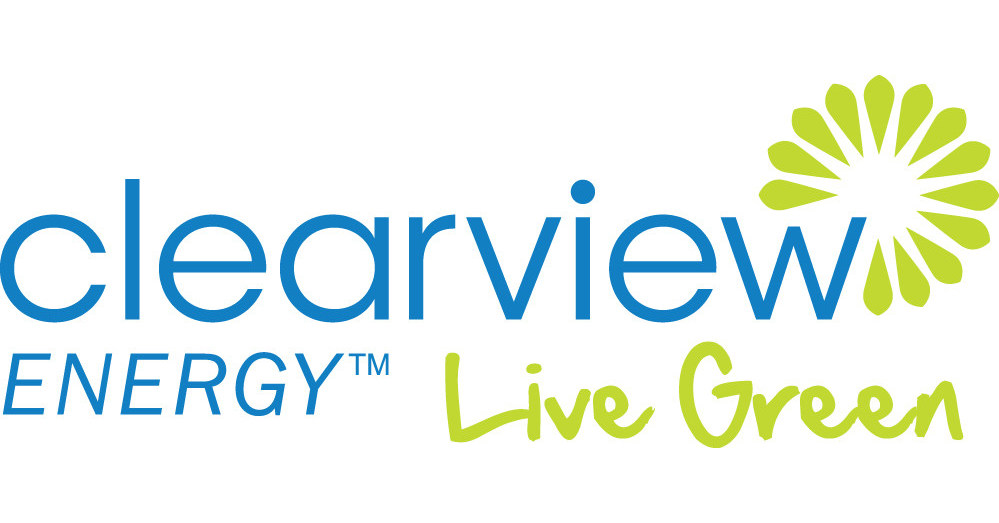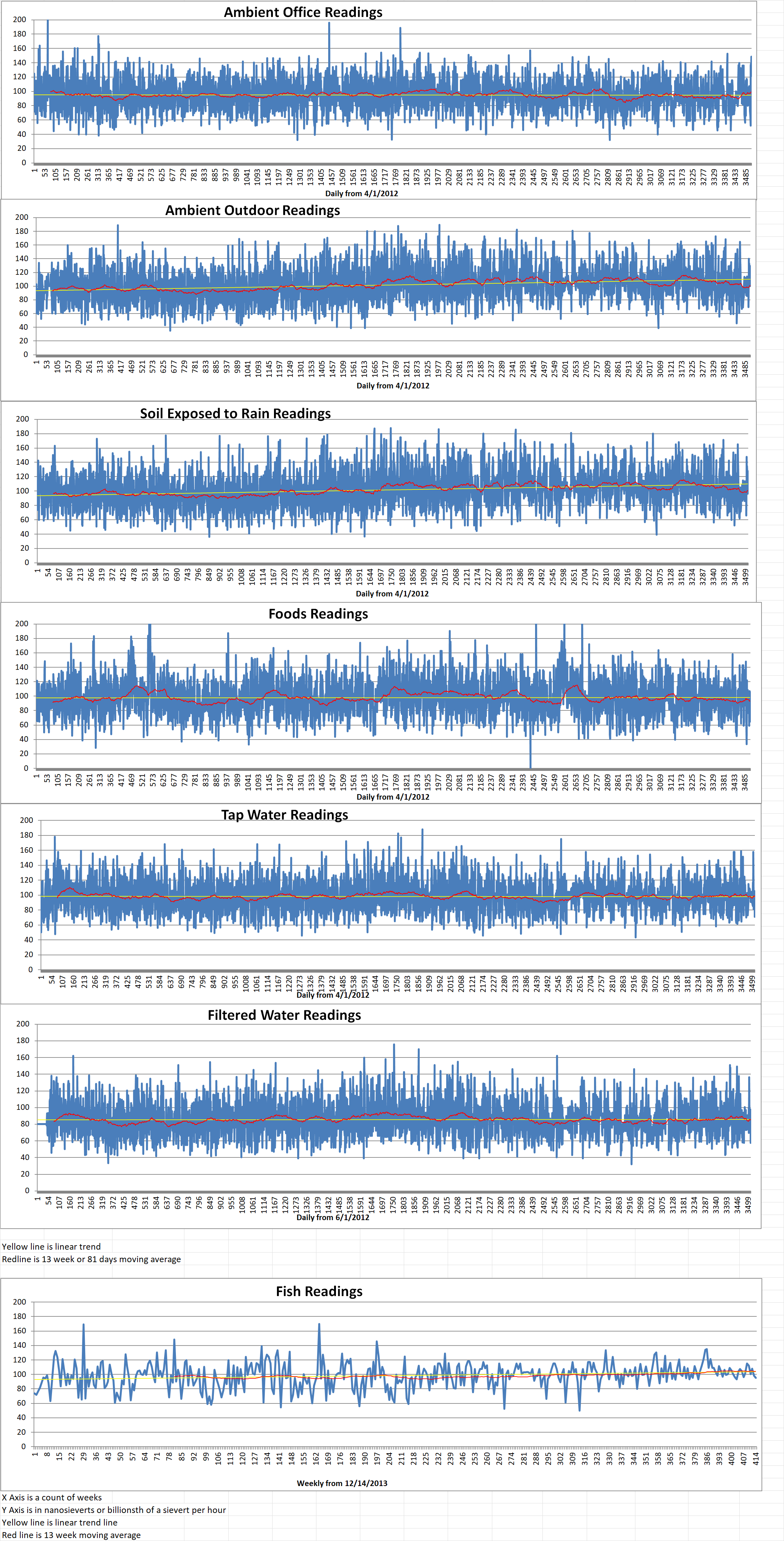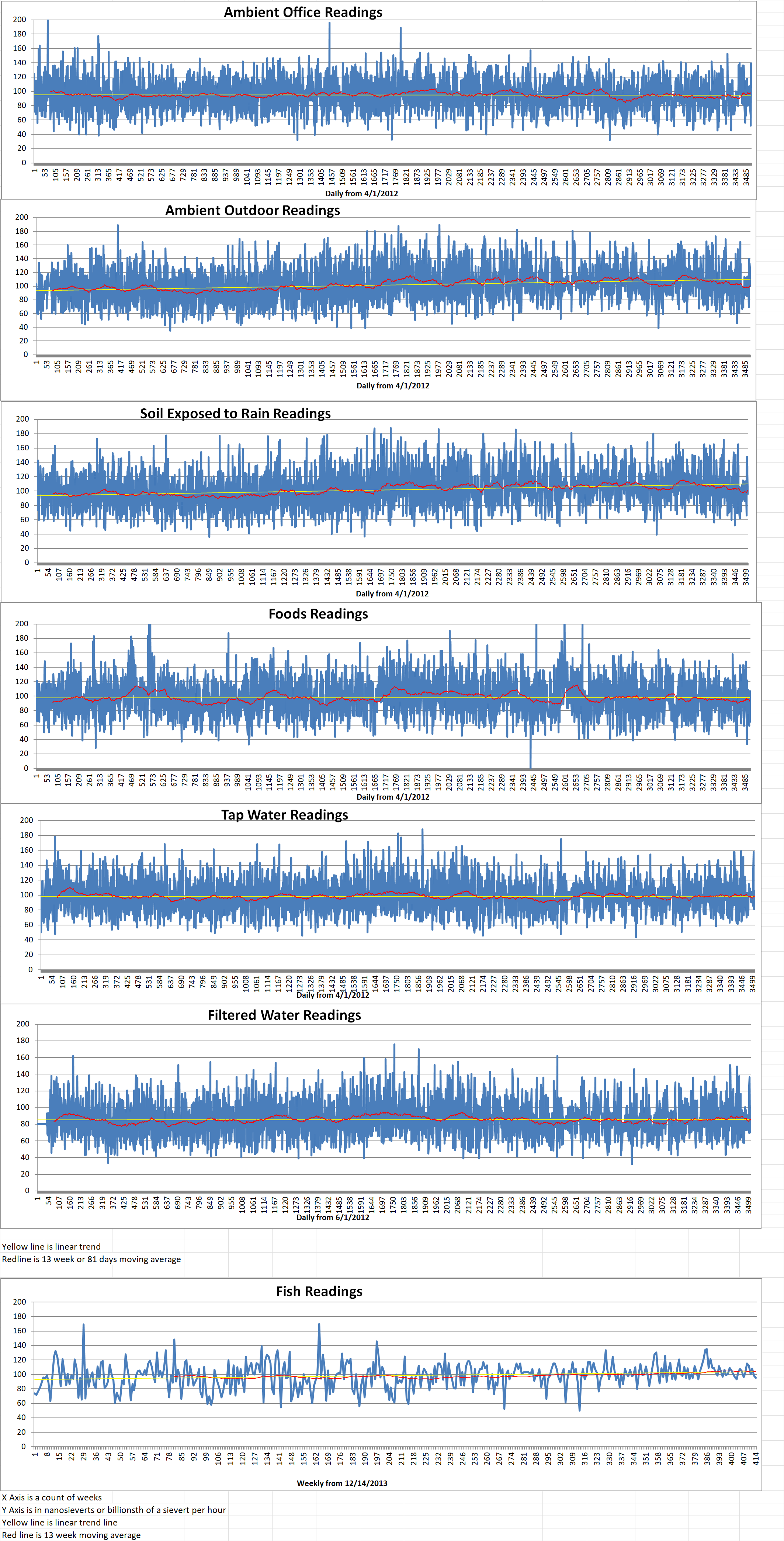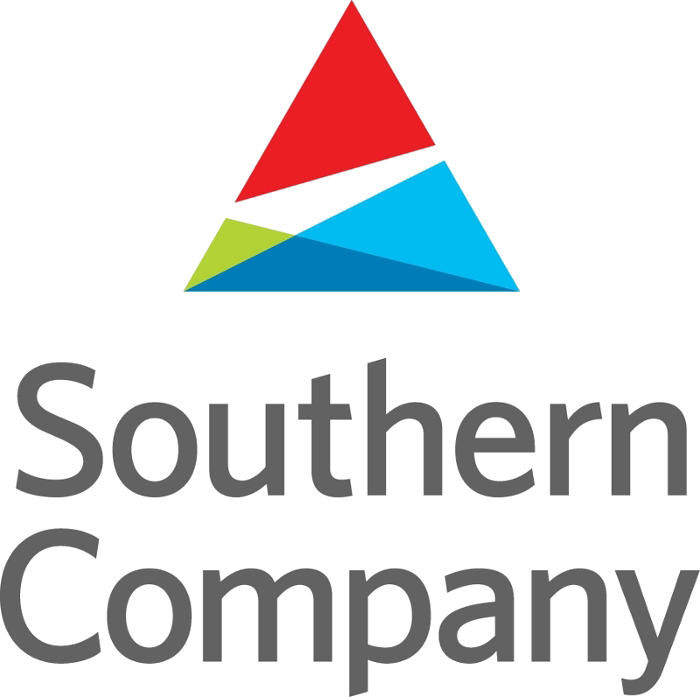Part 4 of 5 Parts (Please read Parts 1, 2 and 3 first)
There are many who do not see advanced nuclear, including SMRs, as being the best option for zero carbon power generation.
Tim Fox is a vice president and research analyst with ClearView Energy Partners LLC. He said, “The Biden administration has made clear that advanced nuclear power can and should play a role — perhaps one day a substantial one — in its efforts to achieve 100% carbon-free generation by 2035. We would characterize this position as pragmatic greening: centrist proposals that deviate from progressive orthodoxy that generally supports non-hydro renewable power over nuclear.”
The Georgia Vogtle project continues to be shorthand for the expansion of nuclear power in the U.S. That is partly because it is more common to hear policy makers debate nuclear retirements that massive new reactors. As the first set of new nuclear power reactors in almost thirty years, Vogtle is the most recent frame of reference. The nearly thirty-billion-dollar price tag overshadows the project’s achievements, according to engineers and analysts working with the GPSC staff.
Officials from Southern often argue that Vogtle’s AP1000 reactors will be economic in the long run when compared to natural gas forecasts. However, this may take sixty to eighty years to happen. The five state utility regulators also agree with that statement. Stephen Kuczynski is the CEO of Southern Nuclear. He said, “So some of the design requirements are very, very strict and very unique to nuclear installations. That’s kind of what helps make these plants so robust. That’s why they operate 24/7 for 60, 80 years.”
However, members of the GPSC’s advocacy group said that the electric company is wrong. Tom Newsome, Philip Hayet and Lane Kollen are GPSC staff and consultants. Last December, they testified that “The company grossly under-estimated the costs of Vogtle 3 and 4 in its filings and testimony to the commission during at least the first 12 years of the project.”
Until the new Vogtle reactors start up, the project cannot receive highly coveted federal production tax credits. The deadline for the tax credit application was December of 2020 but it was extended past that deadline when it became clear that the new Vogtle reactors would not be finished by then. The tax credits, federal loan guarantees and customer payments covering Vogtle’s costs were part of the reason that Georgia Power argued that it would be cheaper for Georgia to build nuclear power in the long run.
The GPSC staff and consultants said that that is not the case anymore. This holds true event considering financial models that forecast natural gas prices as high as twenty dollars a ton and carbon prices at ten dollars at ton. They wrote that, “Carbon dioxide emissions charges do not make the units economic, and the units are still significantly uneconomic versus alternative combine-cycle generation.”
The two new reactors at Vogtle are so close to completion that the GPSC’s advocacy staff says that it is more economic to finish the projects because costs are now going down. However, the economic benefit is small because of how much it has cost to construct the new reactors to date. Liz Coyle is the executive director of Georgia Watch, a consumer advocacy group. She said, “It’s jaw-dropping,”
Please read Part 5 next
Blog
-

Nuclear Reactors 1001 – Can Nuclear Fission Power Generation Compete with Natural Gas Power Generation – Part 4 of 5 Parts
-
Nuclear News Roundup Feb 10, 2022
Amid Ukraine Tension, US Deploys Nuclear-Ready B-52 Bombers to UK commondreams.org
Legislature passes bill to repeal nuclear power plant ban wvnews.com
Nuclear Waste Storage Ban Debated to Halt Project in New Mexico news.bloomberlaw.com
Senator Markey statement on NRC fourth quarter report for Seabrook Nuclear Power Station markey.senate.gov
-

Geiger Readings for Feb 10, 2022
Ambient office = 145 nanosieverts per hour
Ambient outside = 97 nanosieverts per hour
Soil exposed to rain water = 95 nanosieverts per hour
Blueberry from Central Market = 97 nanosieverts per hour
Tap water = 120 nanosieverts per hour
Filter water = 110 nanosieverts per hour
-

Nuclear Reactors 1000 – Can Nuclear Fission Power Generation Compete with Natural Gas Power Generation – Part 3 of 5 Parts
Part 3 of 5 Parts (Please read Parts 1 and 2 first)
A group of former nuclear regulators in the U.S., Germany and France argued last month that nuclear fission power generation is not safe, clean or smart. This group includes a former secretary to U.K. radiation protection committee. Nuclear power is more expensive than renewables in terms of producing energy and mitigating carbon dioxide emissions. This is true even accounting for costs such as pairing renewable energy with storage. The former regulators said that nuclear fission power generation is unlikely “to make a relevant contribution to necessary climate change mitigation” that is needed by the 2030s.
The nuclear industry counters such critic by saying that nuclear power reactors have long lives, low operating costs and a relatively nonvolatile fuel price. The rise in the price of oil and natural gas should give nuclear power a boost, according to the clear energy think tank ClearPath. Rich Power is the CEO of ClearPath. He said, “There’s a global reawakening that nuclear has got to be part of the solution. … There’s nothing like an energy crisis to make nuclear look really good.”
A key factor for where nuclear power generation may go in coming years lies with climate policies. About half of the nation’s reactors will be up for license renewal in the next two decades, according to the NEI. In Michigan, the Palisades reactor is scheduled to be permanently shut down this year. In California, the Diablo Canyon plant will be shut down by 2025. These reactors total more than three thousand megawatts, according to the NEI. The NEI website says, “Premature plant shutdowns would constitute a major blow to state economics and emission-reduction programs.”
A report from the U.S. Energy Information Administration was published in November 2021. In the report, it was found that a federal carbon tax would lead to less nuclear capacity being removed from the grid in the form of retired units. In fact, they say, more capacity could be added.
Marilyn Brown is a professor of sustainable systems at Georgia Technical University. She said that her department uses the same model as the EIA report but extends it to include higher CO2 tax levels. The result leads to more nuclear power on the grid but not until 2045.
Many electric companies deem reactors as critical to meeting their carbon-neutral goals. Many of these companies target 2050 to achieve zero carbon. Utilities often say that they can get eighty percent of the way to zero carbon by taking conventional steps such as shutting down any remaining coal plants and added a large amount of renewable energy. Technologies like next-generation nuclear, hydrogen and storage are needed to bridge the twenty percent gap. Timing is also critical. The more quickly electric companies need to put more emissions-free generation on the grid, the more costly it is going to be. Nichol said “Economics is a driving factor when building these new nuclear technologies with much simpler designs to manufacture and construct. It’s proven that costs go down with sustained programs of new nuclear projects, which is where we see great opportunities for progress in the U.S.”
Please read Part 4 next -
Nuclear News Roundup Feb 09, 2022
Vladimir Putin inserts ‘crazy’ threat of nuclear war into Ukraine diplomacy gazette.com
Sadness as Somerset nuclear power station nears closure bbc.com
US prototype supports microreactor development world-nuclear-news.com
Contract signed allowing resumption of Angra 3 works world-nuclear-news.com
-

Geiger Readings for Feb 09, 2022
Ambient office = 149 nanosieverts per hour
Ambient outside = 129 nanosieverts per hour
Soil exposed to rain water = 128 nanosieverts per hour
Avocado from Central Market = 70 nanosieverts per hour
Tap water = 71 nanosieverts per hour
Filter water = 58 nanosieverts per hour
-

Nuclear Reactors 999 – Can Nuclear Fission Power Generation Compete with Natural Gas Power Generation – Part 2 of 5 Parts
Part 2 of 5 Parts (Please read Part 1 first)
The nuclear industry is turning away from conventional gigawatt plus reactors. Instead, they are now interested in new nuclear technologies that developers say are safer and more efficient. Both of these factors will drive down costs. In other cases, electric companies which own nuclear power plants, are asking federal regulators to extend the operating license lifespans of their large reactors so they can operate longer.
As a result of this situation, money in the bipartisan federal infrastructure law is aimed at two key areas: First, keeping economically struggling reactors alive. Second, pushing new Generation IV technologies out the door so they can be ready for electric companies to connect to the grid by the next decade.
There is one billion two hundred million dollars in the infrastructure package for existing, but troubled, reactors. More than twenty billion dollars has been set aside for the Energy Department to aid clear energy demonstration technologies, including advanced nuclear.
That means that the industry is again banking its future on technologies that have yet to be built or proven at scale. In spite all of the promises that new reactors will be cheaper because of their smaller size and more efficient technology, there is no track record to prove it either way.
The new Generation IV reactors include thermal, molten salt, and fast reactors. Developers are billing them as smaller, safer, more efficient and able to operate longer without refueling that large baseload reactors. Only two states, Idaho and Tennessee, are considering construction of Generation IV reactors right now, but it is expected that others will follow soon.
These smaller reactors are also more agile. This enables them to be paired with renewables to stabilize the grid. Improved safety and efficiency mean that they should also be cheaper which would eliminate one of the nuclear industry’s biggest problem.
NEI, a nuclear industry trade group, sees “great opportunities for progress” in Generation IV nuclear projects as opposed to older, traditional ones, according to Marc Nichol who is the NEI senior director for new reactors. Nichol said “Already we are seeing significant customer interest in SMRs (small modular reactors)”. Yet it is unclear whether SMRs will face some of the same cost challenges as traditional gigawatt plus nuclear reactors.
In the past, the higher price tag for nuclear power plants in comparison to expectations was connected to safety regulation. These are the most stringent of regulations for any type of power plants. In addition, if any work needs to be redone in order to meet the strict codes, that extends the deadline for completion of the plant.
Glenrock’s Patterson said that “There are so many concerns about radioactive material, etc., so that’s what drives much of the cost. You don’t have the same issues associated with regulations for other power plants, understandably so.” With SMRs, federal nuclear regulators must still sign off on stringent safety regulation. Proponents argue that the reactors are inherently safer because they are smaller than convention nuclear power reactors.
Please read Part 3 next -
Nuclear News Roundup Feb 08, 2022
German FM says Iran nuclear talks entering ‘final phase’ apnews.com
EDF to buy part of GE Steam Power’s nuclear activities world-nuclear-news.org
Largest US public power company launches new nuclear program wtop.com
As nuclear talks resume, Iran’s oil exports increase reuters.com
-

Geiger Readings for Feb 08, 2022
Ambient office = 121 nanosieverts per hour
Ambient outside = 100 nanosieverts per hour
Soil exposed to rain water = 106 nanosieverts per hour
Tomato from Central Market = 65 nanosieverts per hour
Tap water = 83 nanosieverts per hour
Filter water = 74 nanosieverts per hour
-

Nuclear Reactors 998 – Can Nuclear Fission Power Generation Compete with Natural Gas Power Generation – Part 1 of 5 Parts
Part 1 of 5 Parts
President Biden has said that he wants to decarbonize the U.S. electricity sector by 2035. This could give a boost to the nuclear power industry but there are two important questions that must be answered. Can carbon targets actually incentivize nuclear technology? Can nuclear power generation compete with natural gas on the open market? This is a debate that is being stimulated by the increasing cost of natural gas.
The nuclear industry has not answered whether nuclear power generation will be more economical at producing power. The costs for two new reactors at Plant Vogtle in Georgia have skyrocketed. The ultimate costs of seventy of the over ninety operating nuclear fission power reactors in the U.S. exceeded the initial cost estimates of the reactors by over two hundred percent according to the Department of Energy (DoE).
There are many different factors to be considered with respect to the cost question. Existing nuclear power plants in competitive markets face economic challenges that could force them to close before the end of their licensed lifespans leaving them with stranded costs and removing emission free electricity from the grid. In the meantime, there are no large, baseload nuclear power reactor projects being planned. The nuclear industry is working to develop smaller, next generation reactors by the end of the next decade. However, the fate and final costs of these projects is uncertain.
Paul Patterson is a utility analyst with Glenrock Associates LLC. He said, “There doesn’t seem to be, in the near term, a big thing that’s going to be pushing nuclear.” Whether the nuclear industry constructs any new power reactors could help shape the electricity mix for decades. Falling renewable energy costs and higher natural gas prices could also influence investment decisions for nuclear fission power generation in unexpected ways.
When compared to natural gas, nuclear can claim lower and more stable fuel costs. However, the capital costs are much higher. Information from the U.S. Energy Information Administration shows nuclear fuel costs ranging from about one third to as low as one quarter of natural gas prices between 2010 and 2020, Overall, the costs of nuclear power generation, including operations, have fallen thirty five percent since 2012 according to the Nuclear Energy Institute.
Southern Company’s Vogtle expansion project has not helped the case for baseload nuclear power. It was hoped that the project would lead to a resurgence of larger reactor projects in the 2000s. However, at this time, it is the only major nuclear power construction project in the U.S. Vogtle’s price tag is already twice an earlier projected budget of fourteen billion dollars. The Vogtle project is more than seven years behind schedule.
Southern Company and a South Carolina electric company were the first to build a new wave of baseload reactors while there were over a dozen other such projects in queue across the U.S. A steep decline in natural gas prices resulting from fracking caused other electric companies to drop their nuclear plans. Since then, more than one big electric company has shelved plans to build big commercial power nuclear fission reactors using similar technology because of the long list of problems at Vogtle.
Please read Part 2 next
